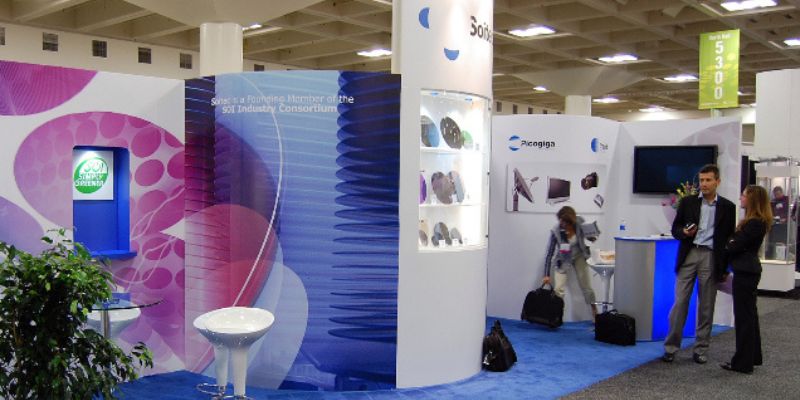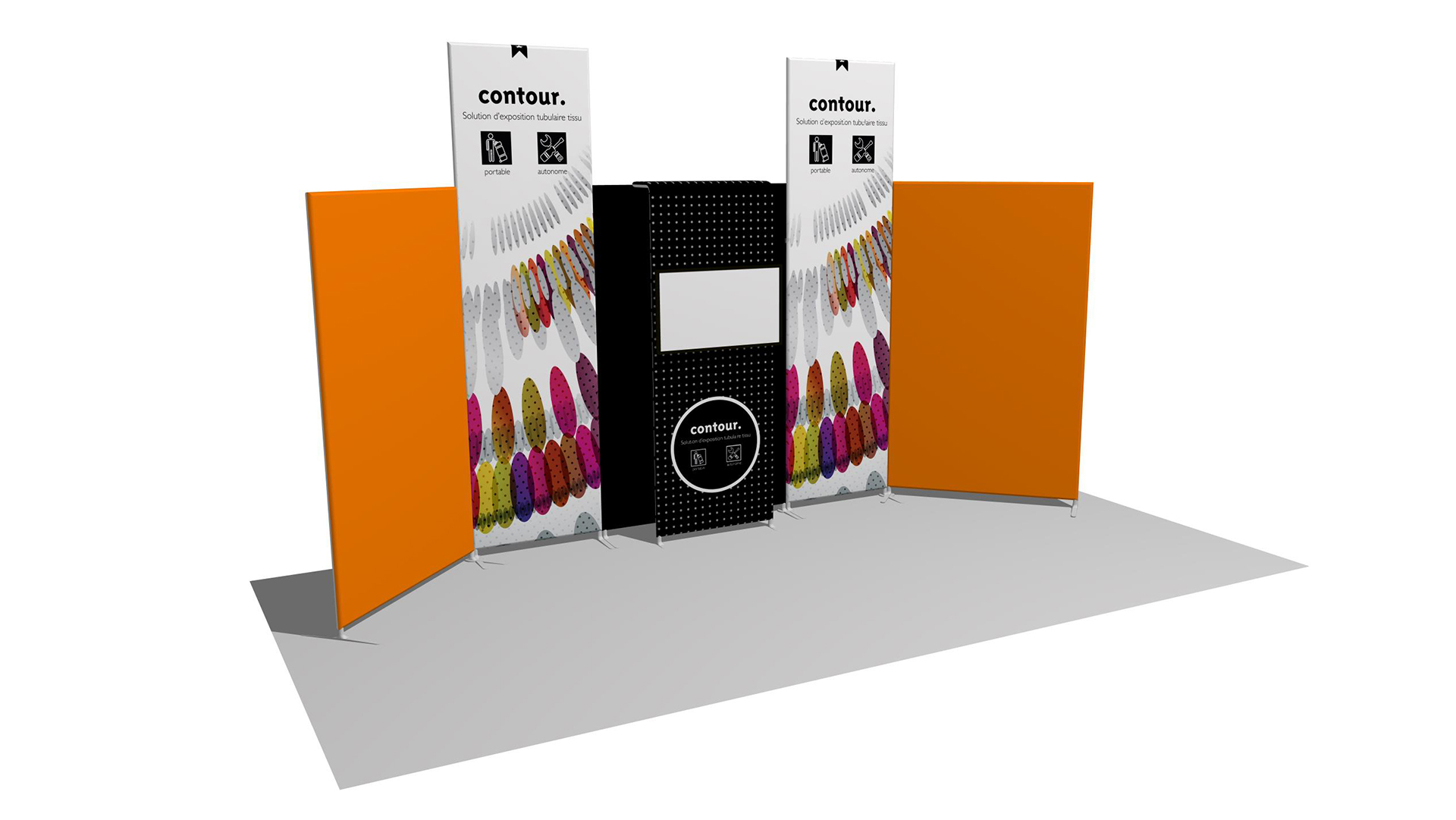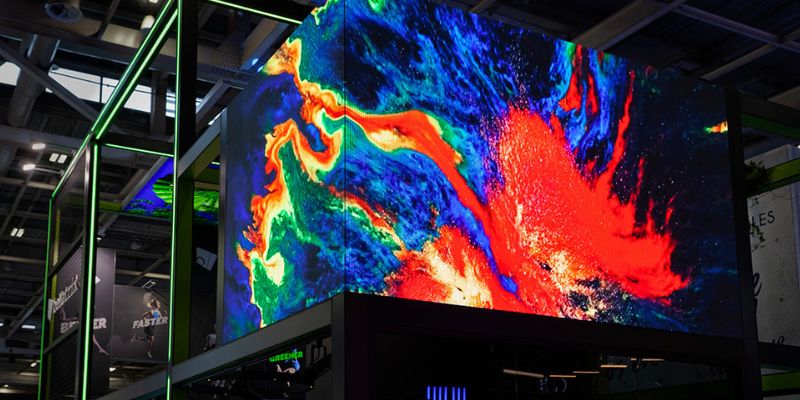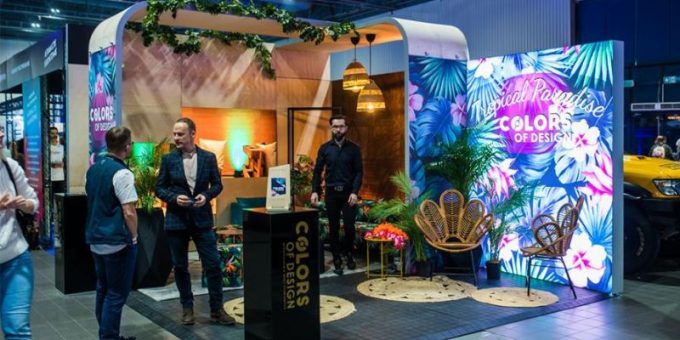6 Tips to Maximize Your Trade Show Booth Design ROI
A trade show is an invaluable opportunity for your business to showcase its products and services, network with potential clients, and stay ahead of industry trends. However, with so many competitors vying for attention, it’s essential that your trade show booth stands out while being cost-effective. Drawing on my 22 years of experience in the exhibition industry, I’d like to share with you my six essential tips to help you maximize your budget and trade show booth design return on investment.
Quick Links
- Buy, Rent, Or Both?
- Find the Right Design
- Prioritize Scalability and Flexibility
- Consider Reusability
- Rent Technological Elements
- Get Rid of Unused Elements
- Final Thoughts
1. Buy, Rent, Or Both?
When planning your trade show booth design, one of the first decisions you’ll face is whether to buy, rent, or utilize a combination of both options. Each approach comes with its own set of considerations, and weighing these factors carefully is crucial to optimizing your booth investment.
In my experience, there are three possible options:
1) Buying
Buying offers long-term value and adaptability but requires a significant upfront investment. It also allows you the creative freedom to tailor your exhibit according to your vision, bringing your brand identity to life.
2) Renting
Renting provides a cost-effective solution, ideal for occasional trade show appearances or businesses working within tight timelines that don’t have ample time to set up. It’s also a very good option to consider if you’re exhibiting for the first time at a trade show event and want to test the market or want to experiment with various branding ideas and concepts. A trade show booth rental eliminates the need for storage, maintenance, and insurance, offering a hassle-free experience. It also gives you the option to choose between several booth spaces and designs for each event.
3) Combining Buying and Renting Options
Because your exhibiting needs can vary from trade show to trade show, and from year to year, the option of renting additional components when needed, and adding them to those you already own, is a cost-effective option.
For example, you can start by purchasing components for a smaller booth, such as a 10’x10′ or 20’x10’, and add rental components when you want to temporarily increase the size of your booth, without committing too much financially. It’s a cost-effective, adaptable solution that ensures you always have the right configuration for the occasion. It also allows you to test the profitability of your trade show in relation to the size of your booth. I’ll go into more detail on the advantages of buying and leasing later, when I discuss scalability and flexibility.
2. Find the Right Design
Choosing the right design in terms of booth systems and space types from the outset can help you save money later on. By taking into account your branding objectives, budget constraints and logistical needs, you’ll be able to choose the right booth design.
Choosing Your Booth Systems
There are 3 different trade show booth solutions to choose from, depending on your budget and the type of promotional event your company wishes to participate in.
- Custom booths: Tailored to your specific needs and brand identity, custom trade show booth designs offer maximum flexibility in design and layout. Based on an existing system, like beMatrix for example, custom booths can include out of the ordinary custom design elements to fit any space or concept but often come with a higher price tag due to their unique construction.

Custom Trade Show Booth
- Modular booths: Built from interchangeable components, modular booths offer a balance between customization and cost-effectiveness. They allow for versatility in design while offering the advantage of reusability and scalability. Modular systems provide flexibility and ease of assembly, making them suitable for various booth sizes and configurations.

Modular Trade Show Booth Concept with beMatrix System
- Portable systems: More affordable than custom or modular options, portable systems are designed for easy transport and quick set-up. These portable exhibition stands are lightweight and compact. In their simplest form, they include retractable flags and banners. They can also be made up of fabric installed on an extruded aluminum structure that can be dismantled and transported.

Portable Trade Show Booth. Image source: Duo Display
Choosing Your Booth Shapes and Types
Although every trade show has its own set of available booth spaces, there are similar booth spaces from one event to the next. Not only do these spaces define the type and shape of your booth, they also have an impact on your costs and your chances of standing out from your competition and reaching the maximum number of potential customers at the event. The key is to determine the type of booth that will best suit your budget and needs for most of your events. Here are the most common types of booth spaces dictated by trade show organizers.
- Inline booths: Positioned against one or more adjacent booths and featuring a single open side, inline booths are a cost-effective option for maximizing floor space.
- Corner booths: These booths are positioned at the intersection of two aisles, offering multiple points of entry and exposure to attendees from different directions.
- Peninsula booths: Featuring open sides on three or more sides, peninsula booths offer increased visibility and accessibility from multiple angles.
- Island booths: Surrounded by aisles on all sides, island booths command attention and offer 360-degree visibility.
- Perimeter booth: Situated along the edges of the trade show floor against permanent walls, perimeter booths offer a unique advantage: greater height.
Learn more about the pros and cons of each trade booth type in our blog.
3. Prioritize Scalability and Flexibility
When it comes to trade show booth design, I recommend opting for a modular trade show booth system for greater flexibility and scalability. These features maximize your investment since your booth can be adapted to different types of exhibitions over the years.
In fact, a scalable kiosk system offers standardized components that can be added or removed as required. This feature makes it easy to upgrade a smaller kiosk to a larger one if necessary, and vice versa. In the long term, this reuse of your initial components helps to recoup your initial investment, while purchasing or renting additional components allows you to temporarily increase the size of your booth for specific events.
With a modular booth system, you can easily increase or reduce the size of your stand as required, without having to invest in an entirely new stand, therefore maximizing your ROI.
When choosing your system, I’d also recommend looking at its flexibility. Can you easily add visual elements such as backlit boxes, TV screens and lighting? For an even more powerful system, consider the possibilities of creating columns, countertops, furniture, floors, curved walls, accommodating doors and windows, and more. The more flexible your system, the more creative you can be in delivering a visually dynamic environment.
4. Consider Reusability
Reusability is another important factor to consider when putting together a new booth design. Think specifically about the structure and the graphic elements of your booth.
First, make sure that your booth system is crafted from durable materials, such as aluminum, ensuring resilience against the wear and tear of regular trade show setups and teardowns. Some modular trade show booths are not only durable but also easy to configure, making them ideal for trade shows with diverse layout requirements. Because they’re sturdy, modular systems offer an excellent return on investment.
Reusing visual elements like graphics is another way to maximize your investment in your trade show booth. I recommend keeping the same graphics for a maximum of two years before refreshing them. By avoiding any references to time-fixed elements such as dates and locations, you’ll be able to reuse your booth materials for different events.
I believe, however, that whether or not you choose to reuse your graphics depends on your industry and its competitiveness. If you’re in an industry like automotive or technology, perhaps you’ll need to change your graphics year after year to stay relevant. With a modular kiosk system, you can easily replace graphics and signage to refresh your booth without having to completely overhaul it. If you’re in a less competitive industry or aren’t necessarily looking to sell a product but rather to educate, then I suggest reusing your graphics for a maximum of two years.
5. Rent Technological Elements
You can also maximize your booth investment by renting technological elements such as audiovisual equipment and lightboxes. This approach allows you to enhance the impact of your trade show booth without the commitment of a purchase. You can access the latest technologies and experiment with different configurations before making a long-term investment. By renting multimedia elements such as LED projection screens, monitors, iPads and touch screens, you enable attendees to interact with your products or services to create memorable experiences. You can also rent lightboxes and light fixtures to enhance the visibility and appeal of your booth if desired.

beMatrix LEDSkin in Action. image Source: beMatrix USA
6. Get Rid of Unused Elements
Who doesn’t have some old trade show booth equipment lying around in their inventory? Selling off unused components of your trade show booth design can be a smart tactic to recoup costs. Unused booth elements take up valuable storage space that you can better utilize for essential items or new inventory.
It can also help you recover a portion of your initial investment, providing extra funds for future trade show expenses or other business needs. There is also often a market demand for gently used trade show booth elements, especially among businesses that are looking to enhance their presence at trade shows without incurring hefty expenses.
Final Thoughts
I hope these trade show booth design tips will help you maximize your trade show ROI and effectively present your brand at every event. Considering factors such as budget, booth types and spaces, scalability, flexibility, reusability and technology will help your company achieve greater success at trade shows. A well-planned and well-executed trade show can lead to increased brand awareness, customer engagement and, ultimately, company growth.
At Hunter Expositions, we understand the importance of maximizing your trade show booth design investment. That’s why we offer different types of trade show booth solutions to our customers in different budget ranges. We offer portable, modular and custom tradeshow booth solutions. I invite you to contact us if you have any questions.

